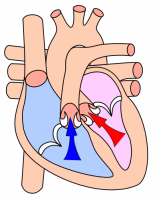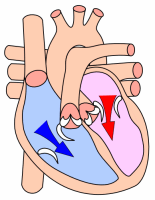Protected: License Plate Statistics
Protected: Maxopoly Mandarin (中文)
How to Divide Fractions in 3 Simple Steps


Related:
Try the Maxopoly Recommended School Calculator on Amazon!
It is allowed on the SAT, ACT, AP Exams, and supports Dividing Fractions!

Thank you for supporting Maxopoly. A small portion of your sale will be donated to Maxopoly to continue to provide you with great articles.
How to Divide Fractions in 3 Simple Steps Step 1: Write out the Problem Step 2: Multiply the Dividend by the Reciprocal of the Divisor Step 3: Simplify the Resulting Fraction
February 2019 Question of the Month: How do you solve a system of equations? Question By: Max
What is a system of equations?

A system of equations is a set of equations (Usually two) that are solved together.
The solution is the point(s) where the equations intersect. However, there are three types of solutions. There could be:
There are also three ways to solve a system of equations. They are:
- Graphing the Equations
- Substitution
- Elimination
Both the Substitution and Elimination methods use algebraic manipulation to get rid of one variable, allowing you to solve for the remaining variable.
Tip: Different methods can be easier or harder to use based on the equation. By familiarizing yourself with the methods listed below, you can save time by choosing the best method.
Method 1 – Graphing the Equations
This method of solving systems of equations works by graphing the equations, and finding where they intersect. This method works best for easy to graph equations, or when you have access to a graphing calculator, or graphing software.
Example:

To double-check your answer, plug-in x and y into the corresponding spots in each of your equations. If you receive true statements from both of the equations your answer is correct. Otherwise, double-check your graph.
Related: The Maxopoly Recommended Graphing Calculator

Method 2 – Solving Through
Substitution
This method of solving systems of equations works by solving one equation for a variable, and substituting it into the second equation. This method works best for equations already solved for a variable, or when it can easily be solved for a variable.
Example:

To double-check your answer, plug-in x and y into the corresponding spots in each of your equations. If you receive true statements from both of the equations your answer is correct. Otherwise, double-check your substitution.
Method 3 – Solving Through
Elimination
Elimination is a method that subtracts or adds one whole equation to the other, which works to remove a variable. Then you can solve for the remaining variable, and get your solution. This method is useful when there is a equal absolute value amount of one variable in both equations.
Some sample equations could look like:
y = 2x + 3 and y = –2x + 4 (The x values would cancel out)
y = 3x – 3 and y = -3x + 5 (The x values would cancel out)
x + 4y = 4 and 2x – 4y = 5 (The y values would cancel out)
Example:

To double-check your answer, plug-in x and y into the corresponding spots in each of your equations. If you receive true statements from both of the equations your answer is correct. Otherwise, double-check your elimination.
Related: Maxopoly Recommended Free Graphing App

March 2018 Question: What is blood pressure? Question By: Anoymous
Have you ever wondered what the numbers on your blood pressure machine ment? Blood pressure is the force of your blood pushing against your arteries. Tending to increase with age, there are two main types of blood pressure.
Systolic Blood Pressure – Is the pressure of your blood while your heart is beating
Diastolic Blood Pressure – Is the pressure of your blood when you heart is resting between beats.
For adults, normal blood pressure is defined as :
120mgHg Systolic
80mgHg Diastolic
However, blood pressure changes frequently throughout the day, rising rapidly during exercise, and falling during rest.
Recommended Blood Pressure Monitors from Maxopoly (Amazon Links)*:
- Omron 3 Series Upper Arm Blood Pressure Monitor with Cuff that fits Standard and Large Arms (BP710N)
*Any item purchased through a Maxopoly Link will benefit Maxopoly. Thank You!


Sources:
National Heart, Lung, and Blood Institute – https://www.nhlbi.nih.gov/
Photos:
Featured Photo – By Kelvinsong (Own work) [CC BY-SA 3.0 (https://creativecommons.org/licenses/by-sa/3.0)], via Wikimedia Commons
Bottom Left and Right – From Wikipedia, created by Wapcaplet
March 2018 Question: How do you use the Partial Quotient Method of Devision? Question By: Lulu
This method is very helpful to become more familier with devision, and is useful for problems that can be evenly divided, or use remainders. However, this method cannot easily be used with integers or decimals.
Below are pictures and instructions on how to use this method.

Draw a “hangman pole” by attaching a line to a regular long division symbol. Then write your division problem inside the long division symbol.

List as many easy to multiply facts using the devisor as you can. (Such as times 10 or 20)

Using your easy facts, subtract as much as you can from the dividend. (See the picture for more detail) Then write the term you multiplied the divisor by at the side of the hangman line. (Don’t worry about being perfect)

Continue using your easy facts to subtract from the dividend untill it cannot be divided by the divisor.

Add up the terms on the side of the hangman pole – this is your answer. (If applicable, account for the remainder)
March 2018 Question of the Month: Who founded the city of Seattle? Question By: Kathryn
Long before the first white settlers founded the city of Seattle, the land was first inhabited by Duwamish Native Americans. Then, in 1851 a group of settlers who called themselves the Denny Party moved on to the land, naming their town New York. Entering a period of prosperity, the new city was moved and renamed Seattle, rapidly expanding into a flourishing metropolis. In the first half of 1889, it was estimated that 500 wood buildings welcoming over 1,000 residents were built each month. But all came crashing down on June 6, 1889, when a devastating fire leveled over a 100 acres of land in the business district. Assisted by the wooden buildings, the fire caused millions of dollars of repair damages. But instead of falling into long-term despair, Seattle used the fire to spark improvements. Reconstructing the wharves, a professional fire department and municipal water works were also created to help prevent future calamities. Now over 160 years later, Seattle has continued to remain a prosperous city, and has become a city on the forefront of innovation, inspiration, and trade.
Further Reading: (Click on each picture for more details)*
Sources:
Seattle Government Website – https://www.seattle.gov
Photos:
Top Left – By Seattle Municipal Archives from Seattle, WA [CC BY 2.0 (http://creativecommons.org/licenses/by/2.0)], via Wikimedia Commons
Top Right – By Ikiwaner (Own work) [GFDL (http://www.gnu.org/copyleft/fdl.html) or CC-BY-SA-3.0 (http://creativecommons.org/licenses/by-sa/3.0/)], via Wikimedia Commons
Bottom Left, Above – The Great Seattle Fire (In the Public Domain, Author Unknown)
Bottom Left, Below – After the Fire (In the Public Domain, Author Unknown)
Featured Image/ Bottom Right – By Seattle Municipal Archives from Seattle, WA [CC BY 2.0 (http://creativecommons.org/licenses/by/2.0)], via Wikimedia Commons
*Any item purchased through a Maxopoly Link will benefit Maxopoly. Thank You!
October 2017 Question of the Month: When was email invented, and by who? Question By: Lulu
Almost all of us use email in our daily lives, from sending a quick message to a friend, asking someone for permission for something, or sharing media. In 1971, Ray Tomlinson created a basic message system between computers, and began using the @ symbol as the address for each messages. Seven years later, in 1978, 14-year old Shiva Ayyadurai, wrote over 50,000 lines of code to create the first modern email program, complete with many of the same features we enjoy today. Without this early form of telecommunications between computers the modern day internet that we take for granted wouldn’t be the same, and short and long messages would be harder to send.
Sources:
Wikipedia – https://en.wikipedia.org
Time – http://techland.time.com
History of Email – http://www.historyofemail.com/
Net History – http://www.nethistory.info



















